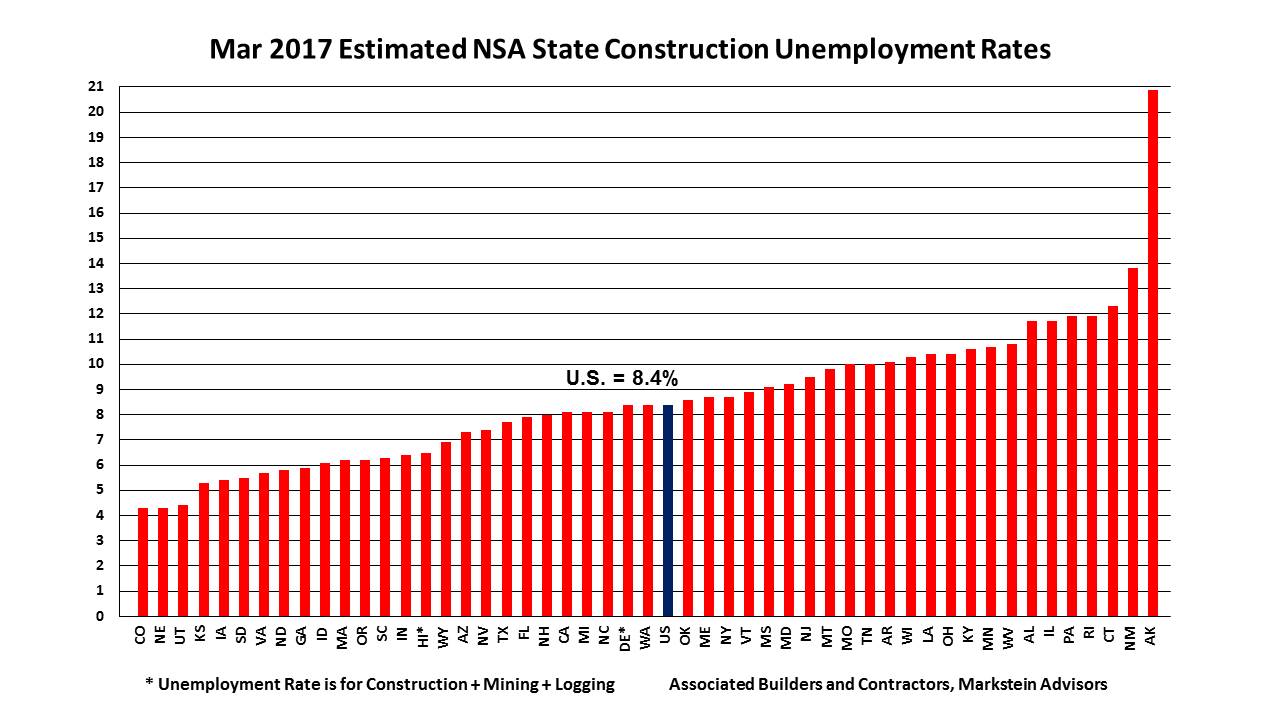Economy Watch: Construction Employment, Costs Pushing Upward
The March construction unemployment rate was the lowest on record, matching the 8.4 percent rate in March 2001, according to Markstein Advisors Chief Economist Bernard Markstein, who conducted the analysis for Associated Builders and Contractors.
By Dees Stribling, Contributing Editor
Two reports about the state of the U.S. construction market were released on Wednesday: Construction unemployment rates and first-quarter major North American market construction costs.
In March, construction unemployment rates were down nationally and in 27 states, and unchanged in two states, on a year-over-year basis, according to analysis of Bureau of Labor Statistics data by Associated Builders and Contractors. The national construction unemployment rate of 8.4 percent at the end of 2016 was down 0.3 percent compared with a year earlier.
The states with the lowest estimated construction unemployment rates in order from lowest rate to highest were Colorado and Nebraska (tie), Utah, Kansas and Iowa. Three states—Colorado, Nebraska and Utah—were also among the five lowest in February. Colorado and Nebraska, with the lowest rate among the states, both had a 4.3 percent construction unemployment rate.
Separately, according to Rider Levett Bucknall, the national average increase in construction costs was about 5.1 percent during all of 2016. Los Angeles and San Francisco experienced the greatest annual increases in construction costs, 8.4 percent and 14.4 percent, respectively.
Boston, Chicago, Denver, New York, Phoenix, Portland, Seattle, and Washington, D.C. had more modest increases, ranging from 3.3 percent to 5 percent. Honolulu experienced a significantly lower annual increase, coming in at 0.7 percent. These increases are against a backdrop of a variable economy, which experienced a GDP increase of 1.9 percent as of the fourth quarter of 2016, down from 3.2 percent in the third quarter.








You must be logged in to post a comment.